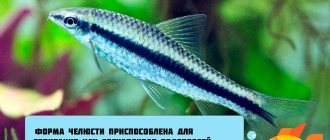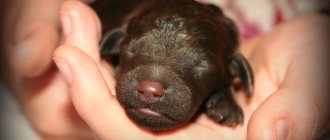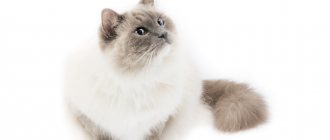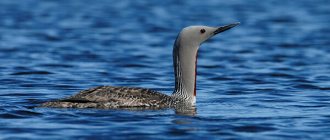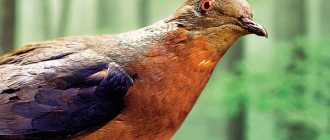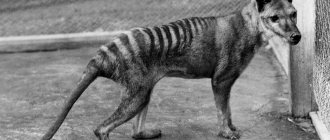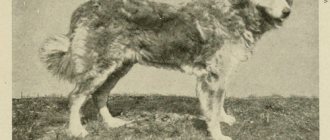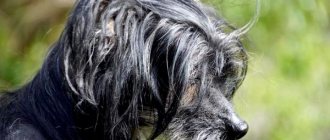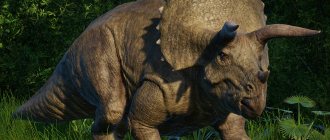The great auk looked like a penguin
Without thinking quickly, what do you call a flightless black and white bird, 70 cm tall and weighing about one and a half kilograms? Penguin? Even though the great auk was not a close relative of penguins, it certainly looked like one. One major difference, of course, is that true penguins live only in the southern hemisphere, especially along the edges of Antarctica, while great auks lived along the furthest reaches of the North Atlantic Ocean.
Description
The great auk (Pinguinus impennis) is a large flightless bird of the auk family that became extinct in the mid-19th century. She was the only modern representative of the genus Pinguinus.
With a height of 75 to 85 cm and a weight of 5 kg, great auks were the largest representatives of both their family and the order Charadriiformes. It is worth noting that great auks that lived in the far north were larger than their southern counterparts. The plumage of males and females was very similar, despite differences in the size of the beak and femurs. Great auks had a mostly black back, white belly, shortened neck and legs, and a small head and wings. Due to the large subcutaneous layer of fat necessary to retain heat, the auk looked like a rather plump bird. The great auk also had a characteristic wide white patch around its eyes that appeared during the summer. The auk's eyes had either hazel or chestnut irises. During the winter moult, the white spots around the eyes of the great auk disappeared, and in their place a wide white stripe and a small gray feather cover appeared around it. During the summer, the auk's neck remained black and brown, and when winter came, it turned white. Some individuals had gray lateral feathers, the purpose of which is unknown. The large beak, curved from bottom to top, was 11 centimeters long and had a characteristic yellow color inside. The beak also had deep white depressions on both the upper and lower jaws. In summer, the upper and lower jaws had seven and twelve cavities, respectively, and when winter came, their number decreased for unknown reasons. The wings were only 15 centimeters long, and the flight feathers barely reached 10 cm. The legs and short claws were black, and the membranes were brownish-black. The great auk was also characterized by large membranes that allowed it to swim and dive quickly underwater.
The zoological description of great auk chicks is unknown, since not a single stuffed chick has survived to date. According to some scientists, the chicks were covered with gray down, although this fact is highly disputed due to the lack of description. In the chicks, the hollows in the beaks and variegated black and white necks were barely noticeable and did not have the characteristic white spot, as in adults. The gray feather line of the chicks began near the eyes and ended just below the eardrum.
The great auk's vocalization is also a poorly understood aspect of its biology. It is assumed that the auk's vocalizations consisted of a low croak and a hoarse cry. According to eyewitnesses of the 19th century, one individual in captivity made gurgling sounds when alarmed.
The Great Auk lived along the shores of the North Atlantic
Great Auk Habitat
During their heyday, great auks spread along the Atlantic coasts of Western Europe, Scandinavia, North America and Greenland, but their populations were never particularly large. This is because this flightless bird required ideal breeding conditions: rocky islands with sloping coastlines that were away from polar bears and other predators. For this reason, the great auk population did not exceed two dozen nesting colonies scattered throughout the vast territory of their range.
Reproduction
By nature, they were silent birds; only during the mating season did the males make hoarse and whining sounds, calling on their partner to create a pair.
The breeding season occurred at the end of May and lasted until mid-July. During nesting, they gathered and nested in huge groups, there is such an opinion; that they could nest near other bird species. For nesting, they preferred to choose steep and rocky landscapes of the island, probably so that predators could not destroy their clutch.
There was only one greenish-blue egg in the clutch, and both parents hatched it. His parents supported him between their short legs and warmed him with their thick down, like a penguin.
44 days will pass and the baby will hatch; its delicate skin was wrapped in thick white fluff, which reliably warmed it in the harsh northern climatic conditions. The chicks were fed alternately. When the feathers on his body replaced down, he could go down to the water and lead an independent lifestyle.
The Indians revered great auks
Long before the first European settlers arrived in North America, Native Americans had a complex relationship with the great auk that evolved over thousands of years. On the one hand, they revered this flightless bird, whose bones, beaks and feathers were used in various rituals and different types of decorations. On the other hand, Native Americans also hunted and ate it, although apparently their limited resources (combined with their respect for nature) prevented them from exterminating the bird.
Interesting Facts
- The names of the people who killed the last two auks. They were; Sigurd Ilefsson and Jon Bradsson.
- From official sources we learned; that in one day poachers collected more than one hundred thousand auk eggs, and boats left the hunting grounds filled to the brim with the dead bodies of these now extinct birds.
- Based on archaeological excavations, it can be argued that; ancient people hunted this bird eight thousand years ago.
- The stuffed auk was sold to the Icelandic Museum in 1971 for £9,000.
- Since the 12th century, ancient tribes buried the deceased along with the bones of these birds.
- People of that time valued not only meat, but also feathers and down of this bird were actively bought by merchants.
ARTICLE 2: Dodo bird (lat. Raphus cucullatus)
The great auk's closest living relative is the great auk.
The great auk has been extinct for nearly two centuries, but its closest living relative, the common auk, is not even close to endangered—it is listed as a species of "least concern" by the International Union for Conservation of Nature. Like its extinct relative, the common auk lives along the shores of the North Atlantic Ocean and also has a wide range but is not particularly numerous: there may be only about one million breeding pairs worldwide.
Nutrition
Of course, such birds obtain food exclusively under water. The auk feeds on fish: anchovies, herring, cod, sprat, capelin, as well as sea worms, bottom mollusks, crustaceans, shrimp, and squid. When obtaining suitable food for themselves, these creatures are able to plunge into the water element for a period of time of about a minute and at the same time reach a depth of seven meters.
To catch and hold the intended victim, they use a beak that is very adapted to this, which is not for nothing that it has a hook-shaped shape. These birds prefer to consume their prey fresh.
And therefore, as soon as they find themselves on the surface, they either immediately start eating, or rush to take the treat to their cubs. Impudence and unceremoniousness are quite inherent in such creatures; therefore, it often happens that they attack other birds in order to take away honestly caught delicacies from them.
Great auk in literature
It was this, and not the dodo bird or the passenger pigeon, that was the doomed bird most familiar to civilized Europe at the beginning of the 20th century. Not only does the great auk appear briefly in James Joyce's classic novel Ulysses, but it is also the subject of satire in Anatole France's novel (Penguin Island), in which a myopic missionary baptizes a colony of great auks, and in a short poem by Ogden Nash, which draws a parallel between the disappearance of the great auk and the dangerous state of humanity at that time.
Lifestyle
They settled and nested in huge colonies. It is no secret that this species was the largest and weighed an order of magnitude more than a modern animal from the auk family. Its body weight was more than that of a domestic goose.
The limbs of the great auk were moved far to the end of the body, based on this fact; she became an impeccable and fast swimmer. However, on land it was extremely clumsy and very vulnerable to predators and poachers.
Based on reliable sources, we can say; that ancient tribes began to consume its meat in 1590
, and the systematic extermination of this species began at the end of the eighteenth century and continued until the 44th year of this century.
Caravans of a variety of ships were drawn to the Icelandic islands, eager to fill it to capacity with auk meat, and then sell the fishery to Napoleonic army. Merchants and the wealthy layer of people of that time valued not only the meat of the auk, but also its down and feathers.
Monument on Fogo Island
A bronze sculpture of the disappeared bird is installed on Fogo Island off the coast of Newfoundland in Canada. The author is artist Todd McGrane, who created it as part of the Lost Bird project. The project includes sculptures of extinct bird species placed in their last known habitat. A sculpture of a great auk stands opposite another similar sculpture in Iceland. This sculpture, also created by McGrane, in turn points to the Icelandic island of Elday, site of the last known breeding colony of auks.
Place and habitat
This type of bird preferred to inhabit the uninhabited islands of the North Atlantic. We present the most common regions where prehistoric birds lived and reproduced en masse in this list:
- Fans Islands;
- Iceland;
- English Isles;
- Scandinavia;
In those days it could be found a little further south. Anthropologists have found their remains in Florida, Gibraltar, Italy and other areas of the Mediterranean.
- Whale shark
- 34 facts about raccoons
- Maned wolf
- Nettle
- Elk
- 100 facts about bears
Great auks could be 'resurrected'
During the time that the great auk was dying out, a large number of stuffed animals were collected in various natural history museums around the world, from which genetic material can be obtained. This bird is an excellent candidate for "resurrection," which involves recovering intact fragments of its DNA and combining them with the genome of the common auk. Although scientists seem more concerned with the "recovery" of species like the mammoth and Tasmanian wolf, don't expect to see great auks at your local zoo anytime soon.
Features of movement
The Great Auk moved at slow paces, using its wings to leap onto steep slopes. While running short distances, she lumbered awkwardly in a straight line. Natural predators mainly included large mammals such as killer whales and polar bears, as well as birds such as the white-tailed eagle. The ability to fly, lost in the process of evolution, awkwardness on land and trust in people made the great auk a rather vulnerable bird, so it was not difficult to get it. People hunted the great auk for meat, eggs and feathers, and, in the last decades of the species' existence, also for stuffed animals for private collections and museums. When any extraneous sounds appeared, the great auk began to react to them, but such phenomena rarely caused her a feeling of fear. Very often the bird had to use its beak to pass through dense nesting colonies or when fending off a human threat or attack. The life expectancy of these birds was, as some researchers believe, from 20 to 25 years, although this fact is rather dubious. During their winter migration south, great auks never set out in entire colonies, but traveled either in pairs or in small groups.
The great auk was generally an excellent swimmer, using its wings as a motor. While swimming, almost the entire body of the great auk was under water with the exception of the head, which was always on the surface. While diving, the great auk was able to perform various underwater tricks, such as spinning or making sharp turns. The Great Auk is known to dive to depths of up to 76 meters. To get to the rocky shores of the islands, the great auk first accelerated under water and then suddenly jumped out of it onto land.

